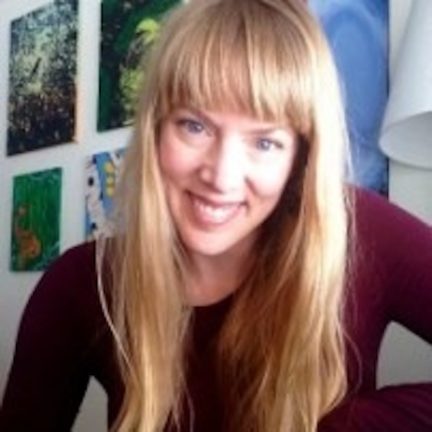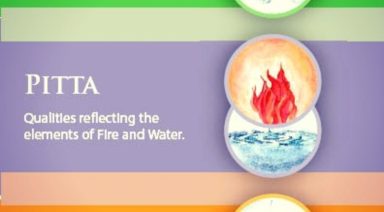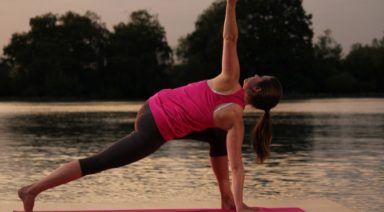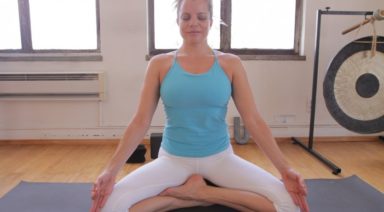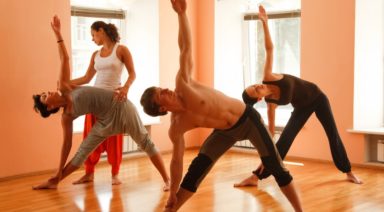The Science of Yoga
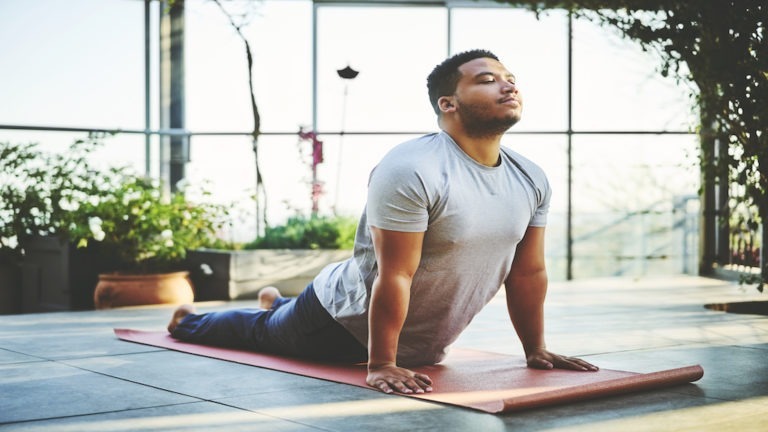
Stress has become a way of life. Whether the days are full of multiple goals and endless obligations, traffic jams and transit delays, complex systems of bureaucracy and finance, or an overwhelming array of in-person and virtual relationships, the pace of current human existence is bursting at the seams.
For centuries, sages have relied on yoga to transcend earthly limitations. Each meditative pose is an effort to identify pockets of pain that accumulate inside the body. Each inhale confronts suffering. Each exhale is an attempt to transcend it. Through this process, worry is replaced with loving-kindness.
Now, bodies of research are proving that yoga is more than a niche spiritual force for enlightened beings.
Yoga has the power to heal the world, one human at a time.
The Rise of Yoga
A system of poses, breathing exercises, and meditations that originated in ancient India to inspire physical, mental, and spiritual well-being first started to spread around the world as a form of exercise in the twentieth century.
For decades, in the US, yoga seemed to capture the interests of quirky, white city dwellers and affluent suburbanite moms, but over the last decade, it has expanded from the studio and can currently be found in public parks, hospitals, outpatient clinics, workspaces, elementary schools, military bases, rehab centers, and even airports.
In fact, the 2016 Yoga in America Study commissioned, by Yoga Journal and Yoga Alliance, estimated that more than 36 million people were practicing yoga in the US by 2015, compared to 20.4 million in 2012. A staggering 80 million people are likely to try yoga in 2016.
The Origins of Yoga
Yoga is first mentioned in the Bhagavad Gita, an ancient collection of Sanskrit poetry that is sacred to the Hindu religion, dating as far back as the second century BCE. Verse 48 of Chapter Two essentially describes yoga as a state of equilibrium.
In the series Introduction to Yoga Sutras, Nicolai Bachman references the authoritative text on yoga to explore what it means to live a yogi life. He teaches that yoga is a path to positive transformation. Through a dedicated yoga practice, one can root out negativity and plant loving kindness. Citing Sutra 1.2, “yoga-citta-vritti-nirodhah,” Bachman describes yoga as a powerful tool for calming the noise.
While the validity of ancient texts may invite skepticism, the first professional-level medical textbook on yoga was released in the US in 2016. In Chapter One, “Introduction to Yoga in Health Care,” licensed medical practitioners recognize the importance of developing habits that balance emotions and modify unhealthy thought-patterns and acknowledge that yoga can play an integral role in preventing disease.
10 Ways Yoga Practice Can Lessen Your Holiday Stress

There is no better time to take your yoga practice “off the mat and into your life” than over the holidays! Whether you are a new student of yoga asana (movement) or a seasoned yogi, here’s a handy guide for using all the tools at your disposal–including breath, movement, and mindfulness–to limit stress and maximize happiness in the coming months:
1. Stay healthy.
Chronic health issues often flare up over the holidays, so don’t forget to use your yoga practice as preventive medicine. Keep persistent symptoms at bay with a daily dose of yoga. Drain your lymphatic system and increase blood circulation through postures and movement.
Try combating infections and colds by opening up your chest with a gentle fish, bridge, or bow pose. Don’t skimp on your yoga just because you are busy! Everyone has time for a quick round of sun salutations in the morning, a few standing forward bends at lunch, or some breathing techniques before bed–no mat or props needed. Remember the old saying: An ounce of prevention is worth a pound of cure. Were they talking about yoga?
2. Be worry-free
“I’m so stressed out. My mind is racing. Everything seems overwhelming. I just can’t stop thinking!” Are anxious feelings wearing down your holiday spirit? Politely excuse yourself from the party; turn off the computer – just take a break. Find a quiet, peaceful spot for some yogic mantra or meditation. You can quickly detach from worrisome thoughts by focusing on the individual sounds of the mantra or by simply following the breath – in and out.
Sometimes a longer exhalation or pausing at the end of your out-breath can calm a speedy mind. If time permits, do some asanas – child’s pose to really let go, balancing poses (like tree pose) to connect to earth and sky, or toe squat to stretch your feet and take the focus out of your mind and into your body. A restorative yoga session can be an hour well spent; your worries will literally melt into the mat and leave you feeling clear and refreshed.
3. Increase your concentration.
As if your life isn’t hectic enough, add in holidays with extended family, shopping, school recitals, the annual office party; the list goes on! All these distractions can wreak havoc on our memory, concentration, and problem-solving. In order to stay productive, incorporate asanas that increase mental focus–like warrior I, II, III, dancer’s pose, eagle pose, or shoulder stand–into your practice. Activate your tired brain with a series of breathing exercises. You can do them anywhere, anytime, seated or standing.
Really crunched for time? Take a few moments sitting in a comfortable seat (eyes closed or with an unfocused gaze), or stand in mountain pose with your hands in anjali mudra (palms together in front of your chest). The simple act of remaining still with palms pressed together can help bring you back to your center.
4. Keep your body toned and fit.
Maybe you’ve done one yoga class, maybe one thousand. No matter your strength, flexibility, muscle tone, core stabilization, balance, cardio health, enhanced athletic performance–the benefits of yoga become apparent with that very first stretch or twist. You might have a consistent practice when November rolls around. Suddenly there’s no time to cook dinner, let alone squeeze in an entire yoga series.
What to do? Do something rather than nothing! Try adding a few minutes of yoga before or after a workout, run or walk. Strike a few powerful poses before the kids get up in the morning, or discretely activate your core with tummy toning exercises while sitting on the couch. During the holiday season, concentrate on the target areas most important to you, and the rest can wait. If you need shoulders flexibility, keep up your downward dogs; if your spine is an issue, don’t skimp on back-bends, forward bends, and twists; if tricep strength is what you’re after, practice chaturangas as often as you can during your yoga flow.
5. Keep your weight stable
Everyone knows a good yoga series burns calories, builds muscle, and provides your body with a systematic, holistic workout. More importantly, yoga practice helps you make friends with your body. This is no small statement. When you know your body, you eat more consciously, recognizing the difference between a food craving and actual hunger. You make more sensible food choices, and intuitively eat less because you know when you are actually full.
Over the holidays, even our most thoughtful meal planning can be disrupted, it’s hard to say no to grandma’s pumpkin pie, or your cousin might be eyeing your dinner plate to see if you’ve eaten all his homemade mashed potatoes. Try keeping your “yogi mind” at family dinners. Stay centered, drink plenty of water, and don’t forget to breathe deeply when you feel stressed or overwhelmed. You can also practice cardio yoga styles during the holidays– power vinyasa, warm or hot flow, sculpt with weights–to get maximum aerobic benefits in the shortest amount of time.
6. Lift your mood and maintain a positive outlook.
Yoga practice is a great way to boost sagging spirits and tame your depression. Yoga raises your heart rate and gets the blood flowing throughout the body.
If you are feeling blue, try stretching your arms overhead and spreading your toes wide in a simple raised arm mountain pose. Backbend in bridge or cobra, opening your chest, rib-cage, and heart. Any inversion that gets your head lower than your heart–supported headstand, legs-up-the-wall pose, shoulder stand, or handstand–can have a positive effect on mood. If the holidays have really got you down, remember to take care of yourself.
Relax and rejuvenate in your favorite restorative pose; don’t skimp on any blankets or props needed for extra comfort. For mental stimulation, use a breathing exercise like bellow’s breath to stir your prana – it’s better than a cup of coffee! Let your yoga practice serve as a physical reminder that your mood won’t stay low forever. Change happens all by itself if you stay on your mat, breath, and follow the sequence of poses.
7. Sleep more
Work is stressful and your parents are coming for an extended holiday stay. You’re worried and anxious so it’s hard to fall asleep. You toss and turn all night, and now you’re cranky and irritated at breakfast. The sleep deprivation cycle begins and with it all the troubling symptoms; insomnia, exhaustion, overstimulated nervous system, chronic stress, sensory overload, muscle tightening, tension headaches, and more.
How can yoga help? Get in a rigorous session during the day, so your body is tired by nightfall, or try a gentle yoga series before bed. Deep exhalations allow your nervous system to relax and your breathing to slow down. Use poses that relieve physical tension such as spinal twists (seated or supine), plow, or a gentle forward fold (let your head hang). Turn out the lights, turn off the day. Climb into bed and let it all go with a final savasana.
8. Improve your vitality and energy
What happens when you follow a sequence of yoga movements choreographed to the rhythm of your breath? Your blood flow increases, more oxygen gets delivered to your cells and tissues, red blood cell and hemoglobin counts rise. You feel rejuvenated. What about when you’re tired? A series of sun salutations can warm and stimulate both the body and the mind. Chair and eagle are also energizing poses you can do anytime; hold them longer to generate more heat and internal energy.
Be sure to make an extra effort to keep your yoga practice going over the holidays; you’ll be rewarded with more vibrancy and stamina to enjoy the whole winter season. Did you overindulge in turkey, stuffing or green bean casserole at Thanksgiving dinner? You’re not alone. Intestinal symptoms like indigestion, acid reflux, bloating and constipation can sap your energy. Wind removing pose (wide leg, legs together, or one leg at a time to target different segments of your colon), twisting poses (to massage your abdomen), reclining bound angle pose (for all your abdominal organs), or some gentle cat-cow movements can offer instant relief for intestinal distress.
9. Maintain your mind-body connection
First, you cut your thumb chopping walnuts for the holiday cookies. Then you trip in your new high heels, twisting your ankle, and minutes later you spill wine on the carpet. Why are we so clumsy and accident-prone during the holiday season? Blame it on the stress- feeling overwhelmed can make you move too fast, lose your mind-body connection, and react with a fight-or-flight response to ordinary situations.
After bandaging your thumb, soaking your ankle, and cleaning the wine stain, cut the cycle of mindlessness- come back to your yoga! Try breathing exercises, balancing poses, or seated meditation. The mindfulness coupled with the physical embodiment your yoga brings can help you recover faster, protect you from further injury, improve your coordination and reaction time, and help you balance better (especially in those heels).
10. Be centered, present, and in the moment
Your commitment to yoga practice is the most precious gift you can give to yourself. Don’t hesitate to use all of your yoga tools– breath, movement, and mindfulness– to keep your holiday season stress-free. Enjoy. Appreciate. Celebrate. Mourn. Rejoice. Connect. Forgive. Extend. Radiate. When you are centered, present, and in the moment, you can give and receive, love and be loved, touch and be touched back. Happy Holidays and Happy Yoga.

